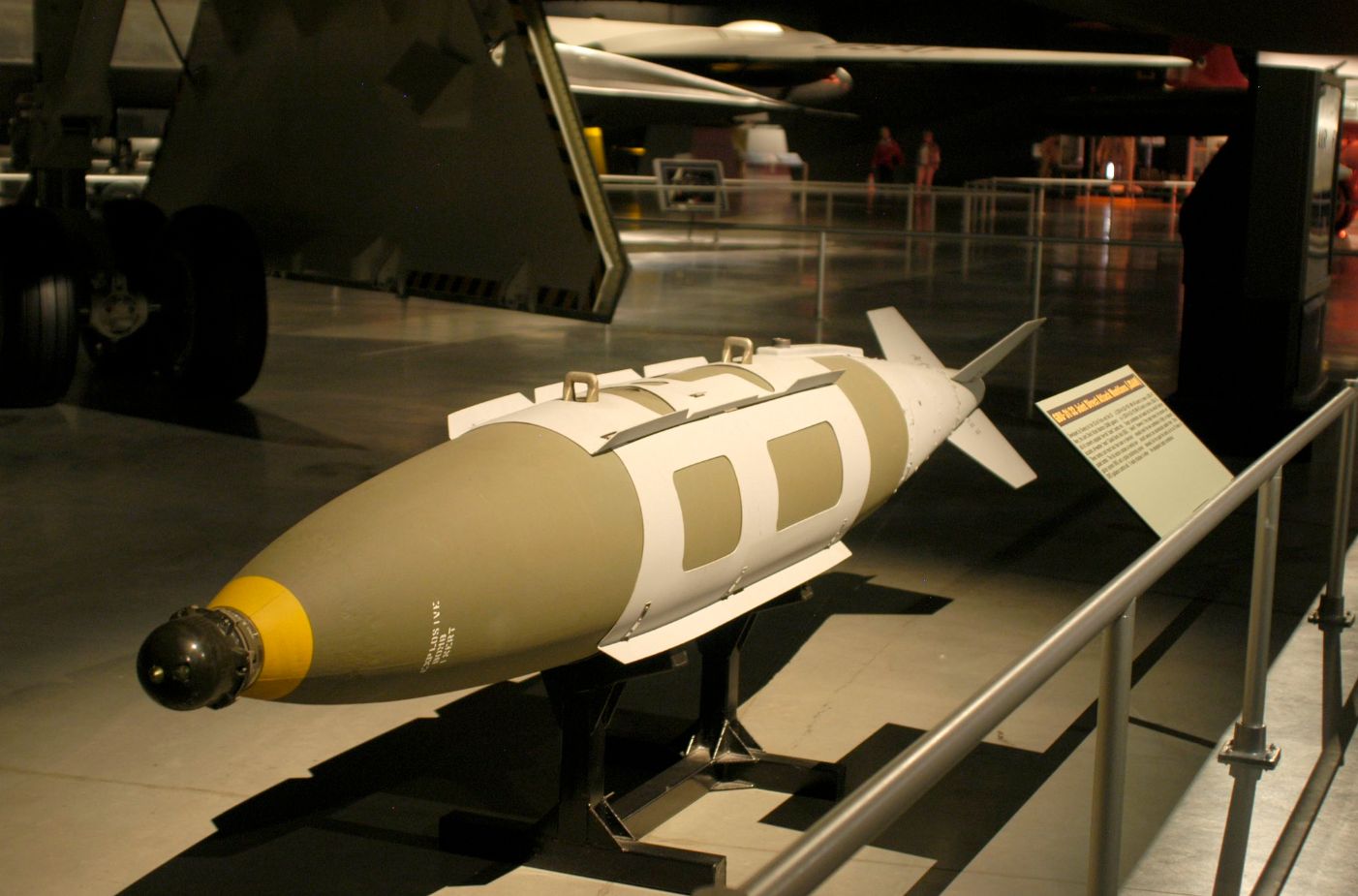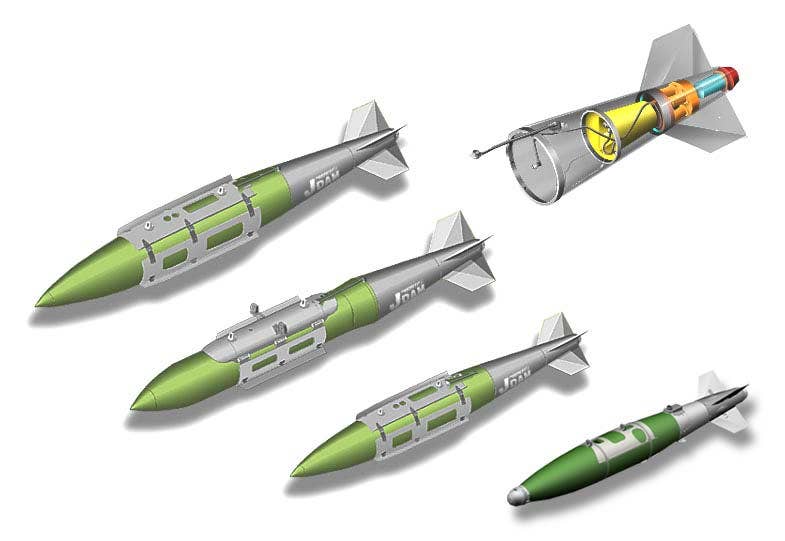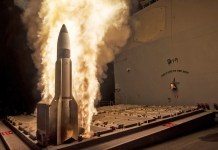Ukraine is believed to have used US-delivered Joint Direct Attack Munition (JDAM) smart bomb on Russian-held territory for the very first time. Meanwhile, the United States is studying how to equip its advanced AIM-120 Air-to-Air missile on Ukrainian fighter jets.
The military-political expert and advisor to the acting DPR leader, Yan Gagin, told TASS news agency on March 10 that the Ukrainian military dropped a JDAM bomb on the area of Kurdyumovka near the Bakhmut region of the Donetsk People’s Republic (DPR) to test the viability of employing it from Soviet-made aircraft.
Gagin told the media, “These are air-launched bombs. Originally, they were made for NATO aircraft. Ukraine has no such aircraft. This could have been a combat test with a non-standard carrier. This can apply, in particular, to MiG-29 multirole fighters.”
Gagin argued in his interaction with TASS that the aircraft that dropped the JDAM was likely the MiG-29 aircraft since Ukraine’s Air Force uses these multirole combat jets to fire the American HARMs.
Earlier this week, the head of US Air Forces in Europe (USAFE), as well as NATO’s Allied Air Command and US Air Forces Africa (AFAFRICA), said that given the amount of additional work to be done on a Soviet-era warplane to modify it for dropping US smart bombs, it is likely the MiG-29 and the Su-27 that fire HARMs will also be used for dropping JADM bombs.

EurAsian Times had recently reported that the United States was also examining the possibility of integrating its advanced AIM-120 air-to-air missiles on Ukraine’s MiG-29 Fulcrum combat jets.
The speculation made by the DPR official may not be without reason.
Earlier, local Ukrainian media reported that the JDAM bomb had been used for the first time by the Ukrainian military in Donbas. The media outlet provided video footage of the explosion confirming this report.
Huge Explosion!!!
Video of Ukraine allegedly using U.S. donated JDAM High-precision Smart Bombs. #UkraineRussiaWar #Ukraine #Russia #US pic.twitter.com/07VvxxzB59
— EurAsian Times (@THEEURASIATIMES) March 11, 2023
Further, the choice of location in this alleged attack is significant as it comes at a time when the Ukrainian military has informed that Russian advances on Bakhmut’s northern and southern flanks are endangering Kyiv’s supply routes into the city.
“Enemy assaults on Bakhmut are nonstop,” the military said in a statement on March 10.
Col. Gen. Oleksandr Syrskiy, commander of Ukraine’s ground forces, said if Russia were to capture Bakhmut, it would get free reign to expand its operations in the wider eastern region of Ukraine. This is likely why Ukraine continues to reinforce and defend the city, even though its fall is predicted to be imminent.
On its part, the Russian Defense Ministry announced on December 1 last year that Russian troops had fully liberated the community of Kurdyumovka near Bakhmut. The region, under Kyiv’s control, is part of the Donetsk People’s Republic and is a major transportation hub for its supplies in Donbas. Fierce fighting for the city is underway.
JADM Precision-Guided Bombs For Ukraine
Earlier this month, media reports indicated that the Ukrainian Air Force has received Joint Direct Attack Munition-Extended Range (JDAM-ER) precision-guided bombs from the US, which would enable them to hit sizeable Russian targets, such as bridges and hardened fortifications, from longer ranges.

In late February, Bloomberg reported that the United States would deliver modified JDAM ER (Joint Direct Attack Munition Extended Range) guidance kits based on the global positioning system that would enable the conversion of common air-launched munitions into a guided weapon.
“Recently, we’ve just gotten some precision munitions [to Ukraine] that had some extended range and go a little bit further than the gravity drop bomb and has precision [guidance],” Hecker said. “That’s a recent capability we could give them probably in the last three weeks.”
Typical JDAMs use steerable tail fins to control the bomb’s course using an inertial navigation system (INS), GPS guidance, and an autopilot. The complete JDAM package includes a new tail with a GPS-assisted inertial navigation system (INS) and strakes installed throughout the bomb’s fuselage, which gives the bomb a limited capacity to glide toward its chosen target.
A JDAM may hit targets at a distance of up to 24 kilometers, depending on the height at which it is released. The JDAM ER’s kit increases this distance to around 72 kilometers.

According to reports, the GBU-62(V)1/B, also known as the Quickstrike-ER, is the only variant of the GBU-62 that has been previously identified. It combines the JDAM-ER kit with the 2,000-pound class Mk 64 Quickstrike naval mine.
Although the Quickstrike mines are based on Mk 80-series bombs, they are not intended to be employed as all-purpose strike weapons. As a result, the JDAM-ERs for Ukraine are likely built around more conventional bombs. The warheads might be Quickstrike mines that have been altered to become conventional bombs.
Hecker also stressed that Ukraine currently possesses only a limited number of JDAM-ERs, “enough to do a couple of strikes.”
According to US military analysts, even a few JDAM-ERs will present Russian forces with unprecedented difficulties because they will give Ukraine a precision-guided fire-and-forget weapon enabling Ukrainian fighter pilots to turn away immediately after firing it, separating themselves from hostile air defense systems.
The Ukrainian Air Force, which the Russian Aerospace Forces already outnumbered, may therefore be saved by the advent of JDAM-ERs.
Neither the Ukrainian Air Force nor the Kyiv administration has acknowledged the first use of these bombs yet.
- Contact the author at sakshi.tiwari9555 (at) gmail.com
- Follow EurAsian Times on Google News





